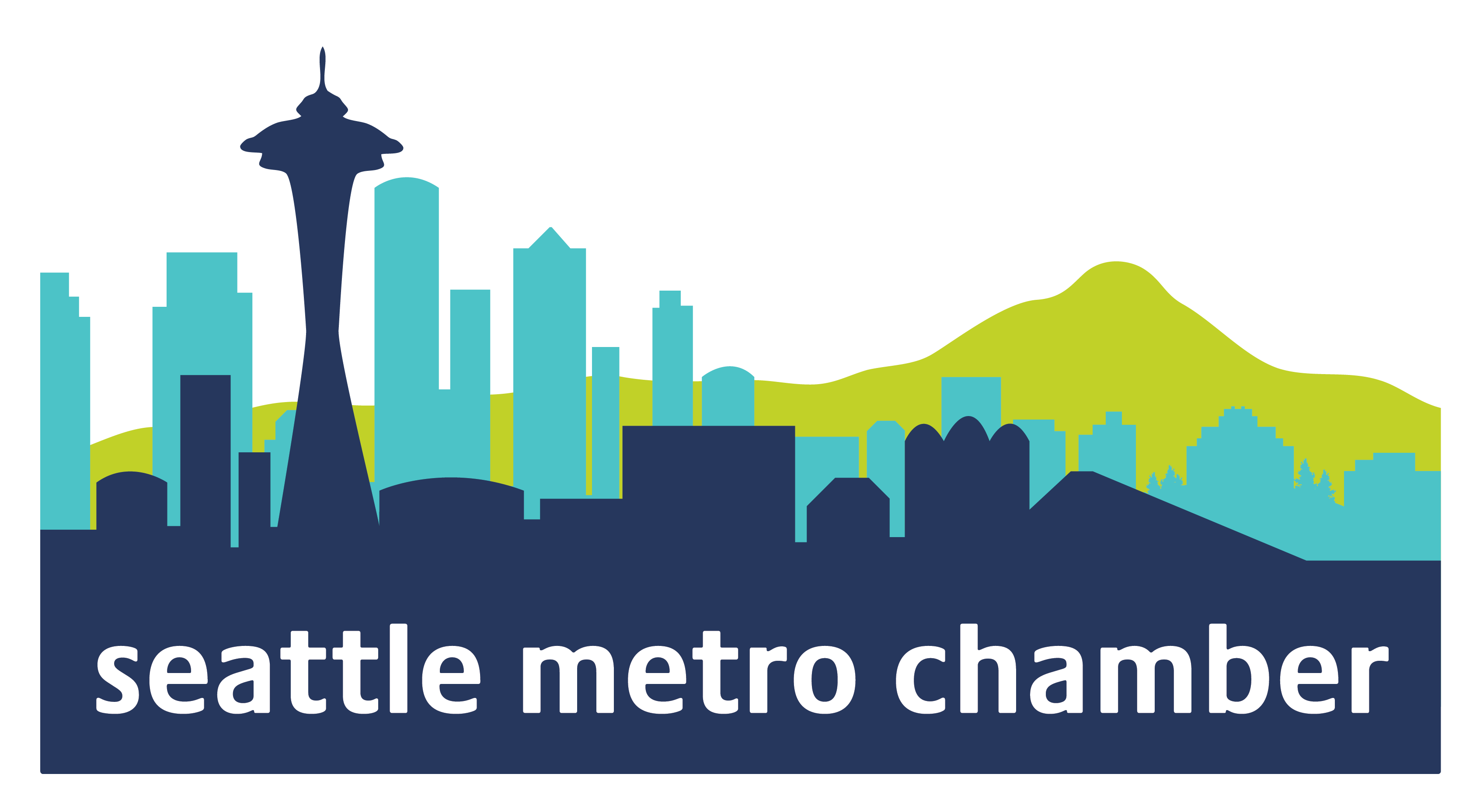The Seattle Metropolitan Chamber of Commerce submitted comments on the One Seattle Comprehensive Plan environmental impact statement on Aug. 22. You will find our comments below highlighting what the Chamber would like to see studied in the environmental impact statement.
The One Seattle Comprehensive Plan will direct how our city grows in the decade to come and lay out zoning policies that will address gaps in housing. The current proposal from the Office of Planning & Community Development lays out five conceptual alternatives to be studied:
- No changes to the comprehensive plan—maintains growth in urban centers and urban villages with no change to land use
- Focused—expands urban villages and/or adds smaller nodes
- Broad—allows triplexes and fourplexes across current Neighborhood Residential Zones
- Corridor—allows more housing options in corridors near frequent transit and amenities
- Combined—adopts all other alternatives
The Chamber believes it is critical to address the housing shortage facing our City and our recent Index poll shows that Seattle voters agree. Sixty-six percent of Seattle voters said they support the building of new housing in their neighborhood.
You can learn more about the One Seattle Plan and how to get engaged here.
Dear Mr. Staley,
On behalf of the Seattle Metropolitan Chamber of Commerce and our 2,500 members, I encourage you and City leaders to take an approach to the One Seattle Plan that strongly embraces the policy tools the City has to increase housing and affordability.
Housing that is affordable across the income spectrum is a top issue for our region’s employers as they work to recruit and retain workers – both workers already in the area, and those moving from other regions and beyond. Especially as employees can increasingly work from anywhere, housing affordability is vital to an equitable, inclusive metropolitan region with a high quality of life: one with dynamic communities, thriving neighborhood businesses, and strong arts and culture.
One only needs to look at the headlines to see rents and home prices rapidly escalating throughout our region. Zoning standards that only allow detached units – essentially banning new duplexes and triplexes in much of our residential areas – drive up the cost of land, making housing more unaffordable and inaccessible. Further, the evidence is clear that at its core, homelessness is a housing problem. In a city facing the twin challenges of a homelessness crisis and a lack of housing affordability, increasing density, promoting housing affordability, and eliminating exclusionary zoning is essential. Seattle needs more housing—all types of housing.
Housing leaders – non-profits, government agencies, and the private sector – have all worked within current system constraints to build more housing. From 2010-2020, Seattle added roughly 60,000 units of housing, a 19% increase. This rate of growth was the third-highest among U.S. cities, just behind Austin and Denver. However, we’re still not adding housing to keep up with the pace of population and job growth – over that same period, Seattle added 129,000 people, a 21% increase in population
As we look to the future and update the Seattle Comprehensive Plan, we need housing growth targets that flex to meet job and population growth. Simply planning to meet the bare minimum of housing growth targets is not enough to get us out of the current housing crisis. We must learn from past mistakes and look at a wide variety of housing types to address this gap. This should include rowhouses, townhouses, duplexes, triplexes, and other diversified housing types to address our middle housing needs.
Aligning with state policy should be a top priority. While the current Alternative 3 looks at legalizing up to fourplexes in current Neighborhood Residential Zones, OPCD should look to proposals from the state legislature last session and study the impacts of legalizing up to sixplexes in current neighborhood residential areas.
Finally, the One Seattle Plan must incorporate how the City will address the historic and ongoing harmful impacts of exclusionary zoning, including a plan to avoid and mitigate displacement without limiting overall housing and growth opportunities. This should include exploring denser housing options in areas at low risk for displacement. We also encourage OPCD to look at options to maximize housing opportunities around current and future light rail stations while avoiding and mitigating the displacement of critical industrial businesses in our region.
We need a bold approach to address housing affordability; the time for half-measures is over. And we know our community supports it – the most recent Index poll of 700 Seattle voters said 66% support the building of new housing in their neighborhood and 82% support policies that make it easier to build new housing in transit and commercial areas.
Thank you, and we look forward to continuing to engage with the City during this process.
Sincerely,
Rachel Smith
President & CEO
